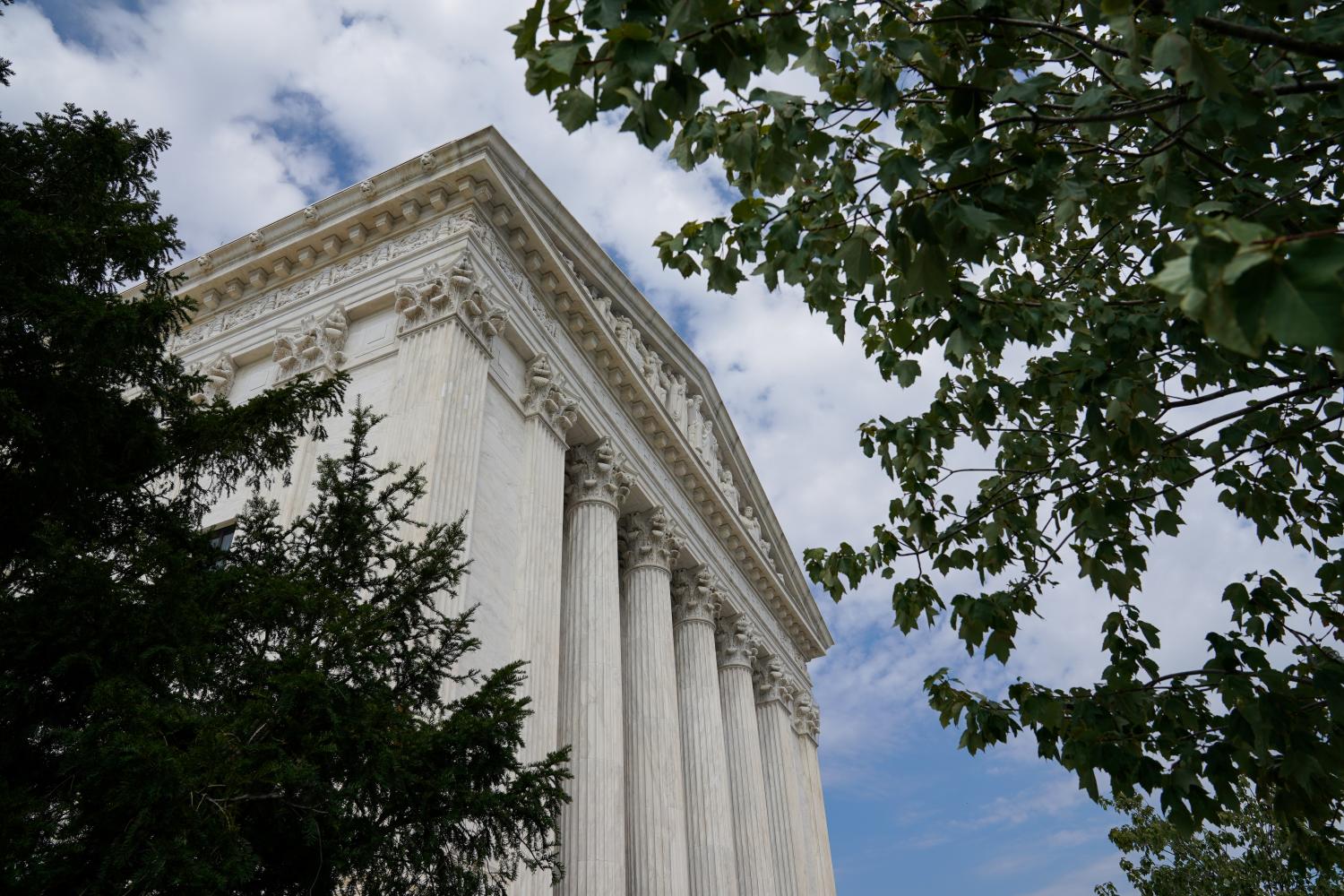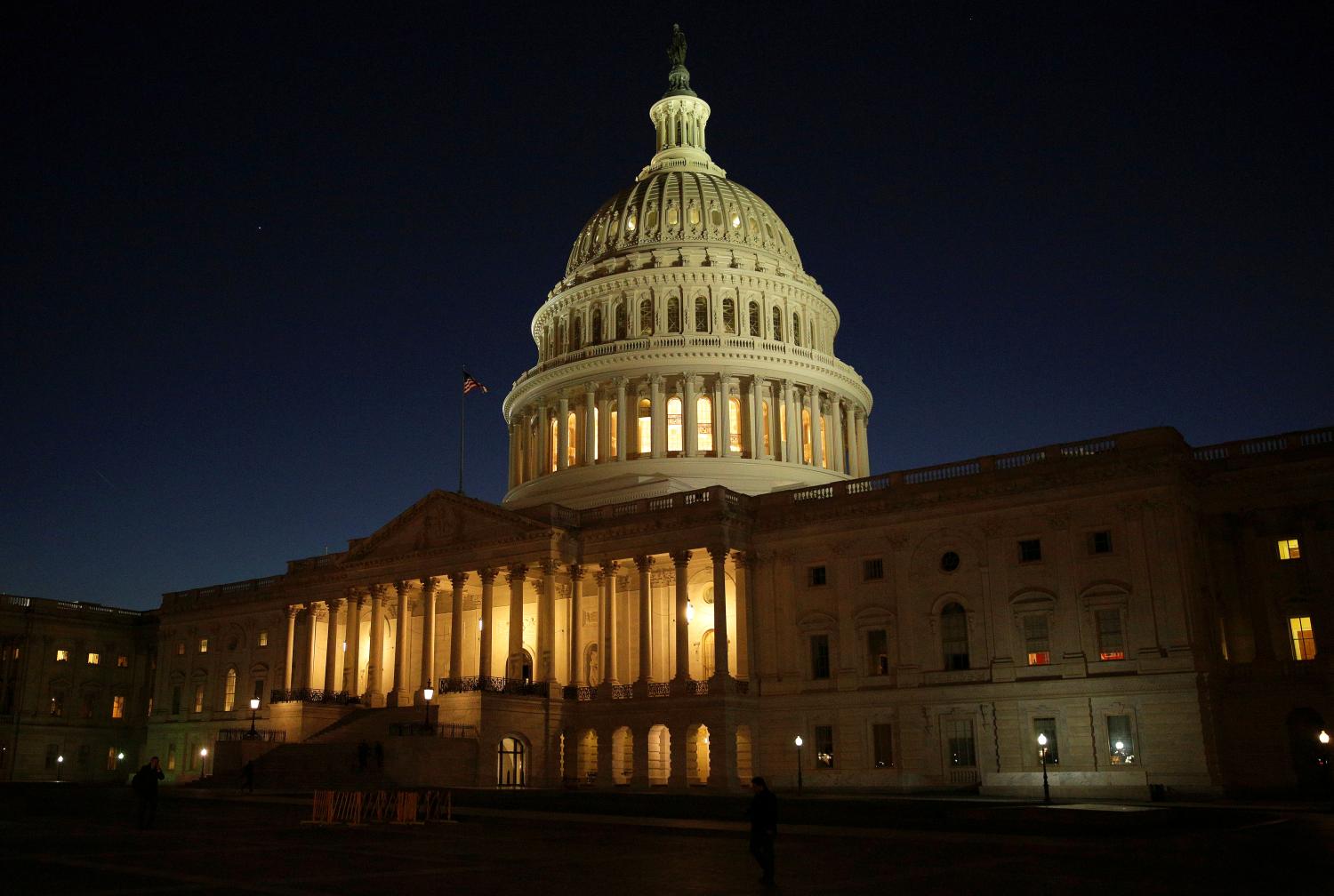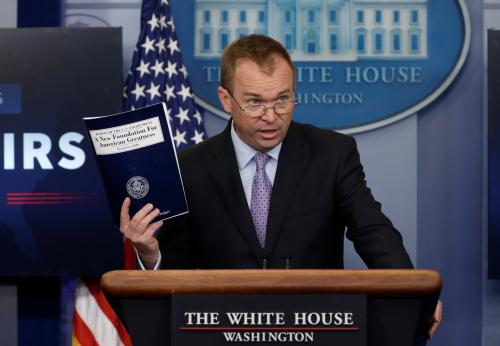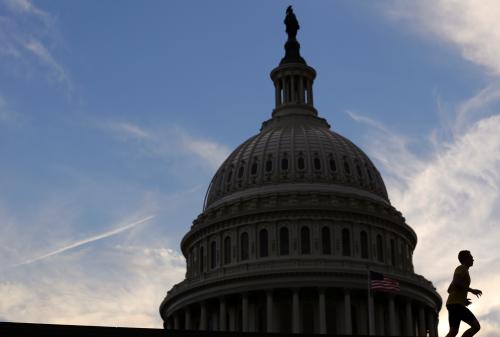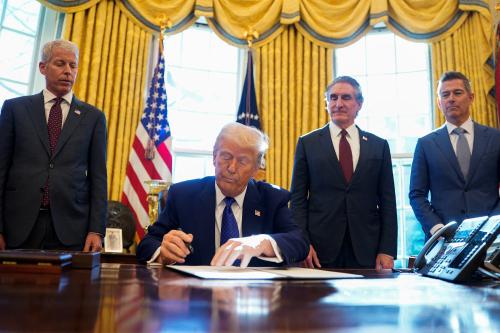This report is part of the Series on Regulatory Process and Perspective and was produced by the Brookings Center on Regulation and Markets.
The Code of Federal Regulations now runs over 180,000 pages long, touching upon virtually all areas of American life. The rules on these pages, while often quite detailed, may often prompt further questions from the public. How do the rules apply to an emerging technology? How should a business comply with the rules in light of a new requirement from another agency? Do an agency’s rules allow untimely applications to be filed in extenuating circumstances? The Supreme Court recently issued a decision that may affect how such are questions resolved. While some have called the decision “one of the most important administrative law decisions in decades” that will “dramatically narrow” agency deference, this piece concludes that the effects are likely to be modest given the existing state of the law and the incentives facing agencies.
The public often asks federal agencies to give them guidance on the types of questions outlined above. Sometimes agencies do this by interpreting their rules (often called “regulations”). Many of these agency interpretations are routine and receive little attention. However, some are sufficiently controversial to prompt a legal challenge. When that happens, how much weight should courts give to the agency’s interpretation of its rule? The Supreme Court held in 1945 that courts should defer to the agency’s interpretation of its rule unless it is “plainly erroneous or inconsistent with the regulation,” a standard referred to today as Auer deference. This has generally been viewed as giving agencies a fair amount of latitude (or “deference”) to interpret their rules.
Critics of this deference standard[1] argue that it grants agencies too much power. They claim that such deference allows agencies to effectively change their rules without consulting the public and with little judicial oversight. Over time a campaign has mounted to abolish or at least severely limit such deference and require courts to engage in more searching review. If successful, courts would likely overturn agency interpretations of their rules more frequently, shifting some power from agencies to courts.
The Supreme Court’s Recent Decision
This deference debate came to a head this year when the Supreme Court decided Kisor v. Wilkie. The case arose when a Vietnam veteran (Kisor) applied for benefits from the Department of Veterans Affairs for post-traumatic stress disorder. The Department interpreted its regulations as prohibiting retroactive benefits and the lower court deferred to that interpretation. The Supreme Court considered whether that lower court deference was appropriate.
The Court’s liberal wing provided four votes in favor of retaining but specifying the conditions under which agencies receive deference. The conservative wing cast four votes to eliminate the longstanding deference doctrine. Chief Justice John Roberts sat in the middle, joining the liberal block to avoid overturning precedent but underscoring a limited scope for judicial deference to agency rule interpretations. The upshot: a closely divided Court limited but did not abolish deference to agency rule interpretations. Specifically, the Court held that agencies ought to receive deference to their own rules only when the rules are legitimately ambiguous and the agency’s interpretation is reasonable, among other factors.
The decision has prompted a number of questions and substantial commentary. Will it significantly restrict when lower courts defer to agencies? What does the failure to abolish deference mean for the broader campaign to curtail the administrative state? In particular, does the decision say anything about a related campaign to reduce other types of agency deference? If deference were abolished, would judges make better informed decisions than agencies? Would reducing judicial deference make the administrative process more or less accountable to the public?
Would reducing judicial deference make the administrative process more or less accountable to the public?
These are all important questions. This piece focuses on yet another issue: how much will the Court’s decision to retain deference to agency rule interpretations under a narrower set of circumstances than might have applied under prior law likely matter in practical terms? When their rules are challenged, will agencies receive deference from courts less frequently? Will agencies be motivated to make their rules more specific to strengthen their hand if challenged in court? This piece concludes that the impact of the Court’s decision is likely to be modest in light of prior court decisions and agency incentives.
How Often Have Lower Courts Previously Deferred to Agency Rule Interpretations?
Restricting judicial deference matters only to the extent that courts currently defer to agency rule interpretations. Importantly, Supreme Court opinions in 2006 and 2011 already somewhat restricted when agency rule interpretations receive deference. These cases created important deference carve-outs and left some open questions about when it should apply. To take one example, the Court held in 2011 that deference is inappropriate when an agency interpretation of its rule upends established public expectations (termed “reliance interests”). In several instances, individual justices also wrote non-binding opinions criticizing deference to agency rule interpretations and expressing support for restricting or abolishing such deference. While these opinions did not change the law, they did signal a growing desire among the Court’s conservative justices to overturn or otherwise limit deference to agency rule interpretations.
Many lower courts appear to have gotten the message, changing their behavior in response to the deference carve-outs and possibly in response to the non-binding criticisms. One study attempted to quantify how often lower courts deferred to agencies’ interpretations of their own rules over the period for from 1993 to 2013. The rate at which federal courts of appeals discussed deference to agency interpretations of their rules remained relatively steady over the entire period at approximately 30 cases per year. However, these data suggest that the rate at which agencies actually won in these cases fell over time. From 1993 to 2006, agencies won 78 percent of these cases. After 2006, the year when the Supreme Court first limited deference, the agency win rate fell to 71 percent (the data collected end in 2013).
Notably, the authors found that the rate at which agencies won did not fall for cases involving other forms of deference, most prominently, agency interpretation of statutes, which were not affected by these Supreme Court decisions. This is consistent with the hypothesis that the Court’s recent decision in Kisor v. Wilkie to limit but not abolish deference to agency interpretations of their rules is a continuation of a trend that began in 2006, not an abrupt course change. The extent to which this trend continues and even accelerates as a result of Kisor will be determined case by case in the lower courts, as the Court’s recent decision leaves them with significant leeway. It does this by instructing them to consider a number of relatively amorphous factors. Justice Gorsuch emphasized this point in Kisor, writing that the upshot of the majority’s decision was to impose “nebulous qualifications and limitations” that fail to provide the lower courts with “candid and useful guidance.”
Will Reducing Deference Motivate Agencies to Draft Different Rules?
If the trend described above continues, and courts defer less to agency rule interpretations, will this motivate agencies to draft their rules differently in anticipation of more searching judicial review? One popular hypothesis is that reducing deference will encourage agencies to write more detailed rules. According to this account, judicial deference motivated agencies to write broad and vague rules that could later be fleshed out through interpretations that would be upheld by deferential courts. Without such judicial deference, this theory argues, agencies would abandon this strategy and write more detailed rules.
There are substantial reasons to doubt this account. To begin with, agency rule drafters may not consider deference all that carefully. According to one survey, only 39 percent of rule drafters considered judicial deference to their rules. Unless this figure increases, restricting deference will have little impact on many agency rule drafters (and presumably agency leadership as well). Still, will the subset of rule drafters (and the agency leaders who ultimately approve rules) who are aware of deference be motivated to write more detailed rules in response to declining deference?
There are good reasons to suspect not. Consider the existing motivations of agency leaders and their staff.[2] For example, agency leaders and their subordinates generally prefer to impose their policy views rather than leaving ambiguity for their successors, who might be from a different political party, to fill in. More pragmatically, agency leaders and staff may prefer not to divert effort to later fill in details about ambiguous rule provisions. Ambiguous rule provisions may generate written questions and phone calls from the public, which take time and resources to consider and answer. Regulated entities may be especially likely to ask such questions when an ambiguous rule provision could be the subject of an agency enforcement action or private lawsuit. Some agencies field many such questions, creating a significant challenge to provide timely and consistent responses. Writing more detailed rules reduces this problem, leaving more capacity to work on other issues. Finally, some regulatory ambiguity stems from the inevitable inability of rule drafters to future anticipate situations in which the rule will be applied. To take one example, debt collection rules written in the 1970’s that refer to mail and phone calls inevitably present ambiguities when applied to internet communications.
How Much Does Deference Matter in the Big Picture?
Even if judicial deference declines and even if some agency rule drafters take note, it is important to step back and look at the broader picture. Agency leaders and staff know that most agency rules are unlikely to be challenged in court because they are relatively noncontroversial and do not justify the substantial expense and time required to mount a court challenge. Judicial deference will be irrelevant to how agencies draft these rules, assuming agencies know which rules are more likely to draw challenges. Thus, no matter how it is interpreted by the lower courts, the Kisor decision will have little impact on how agencies draft the many rules that, in their view, are unlikely to be challenged.
What Does History Tell Us?
History may also be instructive, as this is not the first time the Supreme Court has issued a decision on deference to agency rule interpretations. One study evaluated how agency behavior changed after agencies saw an arguably broader scope for deference following several Supreme Court decisions in the 1990’s. In that case, the Court held that agency rule interpretations were to be reviewed under a “deferential standard” and should be upheld “plainly erroneous or inconsistent with the regulation.” The study found that agencies did not begin to draft more vague rules in the wake of this decision. Applying this finding to the present context suggests that agencies are similarly unlikely to change their rule drafting even if Kisor reduces deference. On balance, then, the best evidence suggests that the impact on how agencies draft rules will be relatively modest.
Conclusions
On balance, the Supreme Court’s recent decision in Kisor v. Wilkie, which limits the scope for judicial deference to agency rule interpretations, appears unlikely to have a major impact on the administrative state. Of course, the ultimate effect will largely be determined by the lower courts and nobody knows how expansively they will apply the decision. If they read Kisor broadly, agency rule interpretations may indeed by successfully challenged more frequently. If they read it narrowly, the decision will have little practical impact.
But in any case, it is important to place the Court’s decision in Kisor v. Wilkie into context. It is a continuation of a trend toward restricting agency deference that began in 2006, not an abrupt departure from current law. Moreover, agencies face strong incentives not to significantly change how they draft rules as a result of Kisor v. Wilkie. And, most agency rules are unlikely to be challenged in any case. All of this suggests the decision’s impact is likely to be modest even if the lower courts move to reduce agency deference. This would leave the broader battles over the administrative state (including those on other forms of judicial deference to agencies) to future cases.
[1] The deference standard discussed in this piece, which is referred to as Auer deference, differs from its more commonly discussed cousin, Chevron deference. Chevron deference may apply when an agency is interpreting statutes passed by Congress. By contrast, the deference standard discussed in this piece may apply when an agency is interpreting its own regulations.
[2] A variety of other motivations unrelated to judicial review may also affect this decision. In some cases, ambiguity may have strategic advantages for agencies relative to non-judicial actors like Congress and interest groups. In other cases, agencies may use ambiguity to resolve internal policy disagreements. Both of these topics are beyond the scope of this piece.
The SEC disclaims responsibility for any private publication or statement of any SEC employee or Commissioner. The Article expresses the author’s views and does not necessarily reflect those of the Commission or other members of the staff.
The author did not receive any financial support from any firm or person for this article or from any firm or person with a financial or political interest in this article. He is currently not an officer, director, or board member of any organization with an interest in this article.
The Brookings Institution is committed to quality, independence, and impact.
We are supported by a diverse array of funders. In line with our values and policies, each Brookings publication represents the sole views of its author(s).

